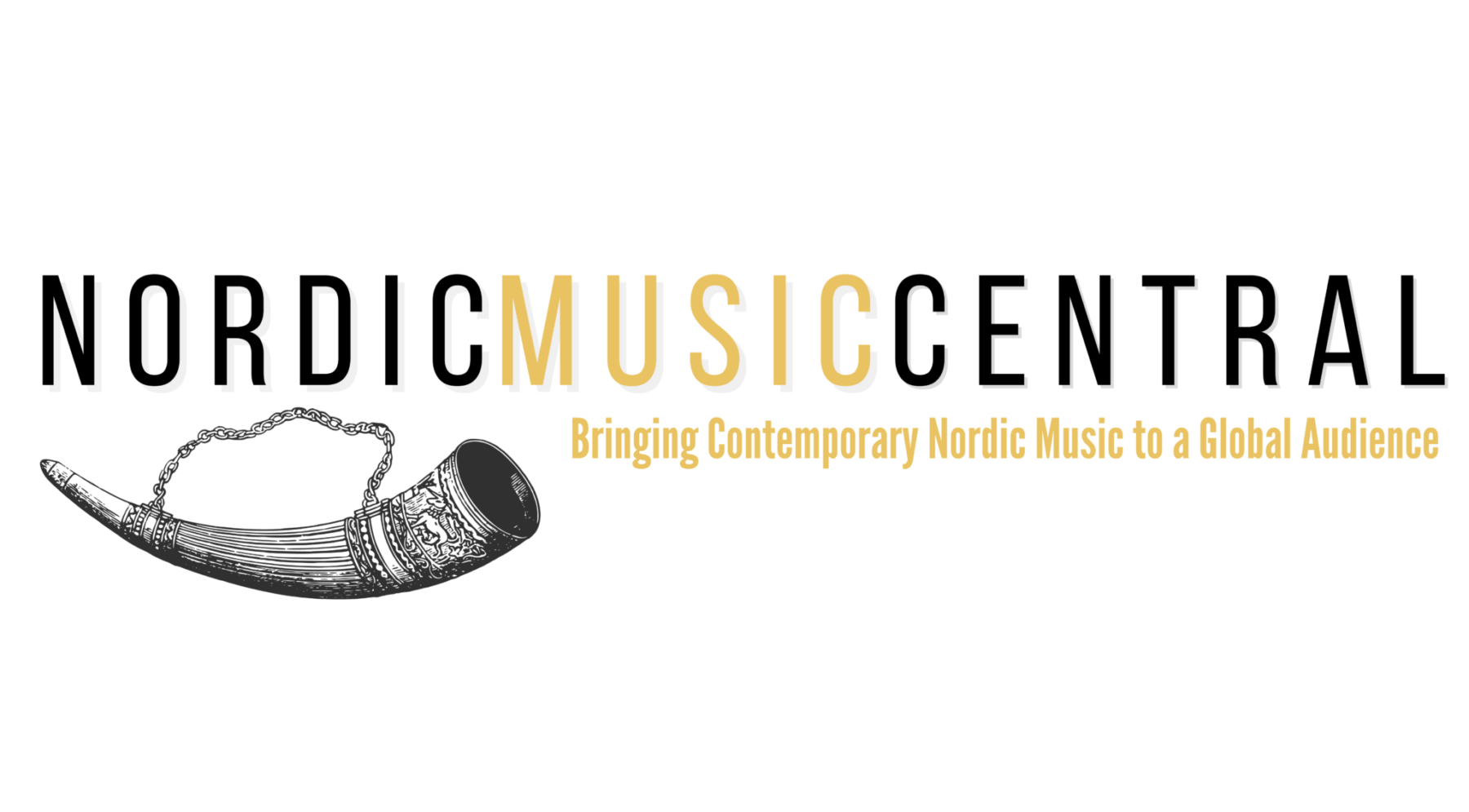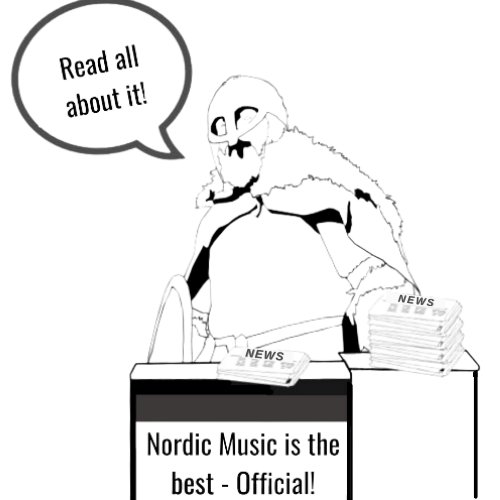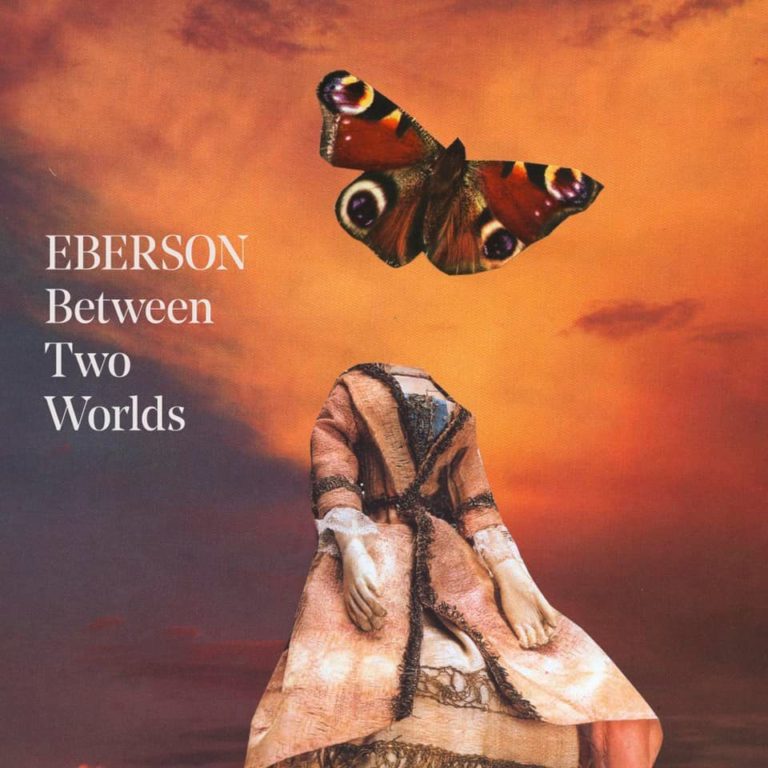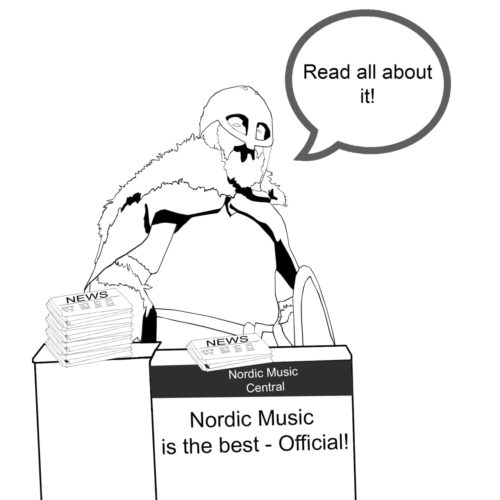It’s funny how strange thoughts pervade your mind when you’re doing this music reviewing lark. I already reviewed a couple of singles from this, the second album by Oslo father-daughter duo Eberson.
One of them was a notably jazzy one and the word ‘Jazzerson’ popped up. I couldn’t help it, it just sounded so right.
Then, at the moment I received the PR about the album I was listening to Malcolm McLaren’s ‘Double Dutch’ on the radio, with its catchy repeated refrain “Ebo-Ebo-Ebonettes,” the name of the New York troupe who energetically dance the tricky Double Dutch over superfast skipping ropes. Yep, you guessed it. I was carrying around ‘Ebersonettes’ in my head all day.
Putting aside the frivolity, this is an experimental album that requires deep concentration on the part of the listener. Don’t have it running through your headphones while you’re supermarket shopping. That’s the domain of Kei$ha.
It is a top of the range, best-in-class, blue chip, gilt-edged, peachy, elegant piece of work that needs to be played on a turntable enclosed in oak panelling while you sip a bottle of the best Shiraz and munch on dark chocolate and almonds.
And it gladdens the heart to know that it was a creation of the pandemic lockdowns (remember them?) when Jon (Dad) convinced Marte (Daughter) they should make some new music together rather than mope.
It’s a different album to the previous one, ‘Empathy’ (although that might have made a good title for this one too) in the sense that the emphasis is on the instrumental rather than the vocal. The variety on show is remarkable.
The first track, the eight-minute ‘Dream Walking’, starts off like Anna von Hausswolff’s ‘Evocation’ with a deep, rumbling synthesised sound before the fluttering electronic noise of the jungle cuts in. Thereafter it takes on the form of the background music to a suspenseful detective movie – I was reminded of the brilliant 1970s ‘Man in a Suitcase’ TV series at times and then of Twin Peaks (Dream Walk with Me?). Then Jon Eberson’s clamorous guitar and Aksel Skalstad’s intricate but powerful drumming conspire to blast it into orbit, along with Captain Kirk. Three songs in one; you certainly get your money’s worth.
‘Strange Highway’ was the first track to be pre-released as a single. It describes “a chaotic drive along a mysterious and absurd highway”, which could equally be the Oslo Ring Road, Mulholland Drive or the M62 I suppose. It is said to be inspired by David Lynch (there’s your Mulholland Drive), ZZ Top, Miles Davis and Quincy Jones, but, once the Dire Straits-like opening is out of the way, it quickly adopts the clear, distinct and unique Eberson sound. ‘Unique’ as if Jimi Hendrix had suddenly turned up to jam with Emerson, Lake and Palmer. I’m not kidding. And the ‘Boss Lady’, Marte, gets to shine on this track with delicate rapid fire runs along the keyboard so reminiscent of Emerson in his prime.
You can dial your radio around the world and you’ll hear precious little that is remotely similar to this track, anywhere.
The PR relates that the album’s title, ‘Between Two Worlds’, “reflects thoughts and associations…inspired by everything from concrete dreams to how the subconscious works. Do you dream or are you awake? Did I really see it, or was it just in my imagination?” The state the world is in it is perfectly apposite; it’s hard to verify much of what is going on from day to day, to separate reality from fiction.
Where this album is concerned we’re all together in one big electric dream if Oakey & Moroder will excuse me hacking their song title. So it is of no surprise that the third track should be entitled ‘Reverie’.
There are all sorts of percussive instrumentation on this track, including xylophone or possibly vibraphone; but the guitar is the focal point and here it is played in a way that took me back to the early days of Yes and Steve Howe. Crisp, clear, soothing, and with a tantalising half-melody in each passage.
I once had hypnotherapy sessions for some or other ailment and after a discussion with the specialist she took away the background tape of waves crashing on the seashore and replaced it with a Patti Smith album. As much as I’m a fan of Patti, I wish it had been this. The cure would have been instantaneous.
All change again for ‘Dancing with the Big Fish’. A strange one. I’ve no idea what it means; who or what the Big Fish is unless it’s something to do with the movie. At least it is possible to pick out a recognisable time signature, for the first time and if you look at a diagram of its acoustic ‘signature’ it is thematically consistent throughout. There are similarities to ‘Strange Highway’ in both guitar and keyboard parts although it is more restrained at first. Then it breaks out into a controlled jam, again with that distinct jazz-prog vibe, and which gives drummer Axel Skalstad a chance to shine.
The title track, ‘Between two Worlds’, is described as “a musical soundscape where the raw meets the vulnerable, the dreamy meets the dynamic.”
There is a heavier sound in play here, with guitar and synthesisers combining to conjure up something dystopian, more ‘War of the Worlds’ than Between two Worlds.
Those synths create something close to a flute sound (unless someone is actually playing one) and then somewhat similar to what Keith Emerson dreamed up on ‘Tarkus’ and to the same bass/drum rhythm.
The guitar part is the most dynamic yet, and the whole builds to a crescendo, a cacophony of sound.
‘The Butterfly Dream’ takes yet another turn, a restrained, ambient piece that could be the score to a ghost movie like ‘Poltergeist’; with assorted percussion (do I hear chimes in there? – hallelujah!), weird noises off and held together by a thudding bass line. It might refer to Chaos Theory; a butterfly flapping its wings in the Amazon Rainforest somehow influencing the result of the 3.30 horse race at Chepstow, you know the thing. It has that ‘nonlinear’ quality about it.
More likely it’s representative of something darker and disturbing as the artwork above suggests, with a butterfly hovering in the space where Marte’s head used to be. There’s something quite Lynchian about that.
You need to listen to this one several times to take it all in. I don’t know if there is a Spellman prise for ‘introverted existential track of the year’ but this one should win it hands down.
And so to the final track, which is another previously released single, ‘The Wounded Wolf’, “a dreamy and cinematic song that awakens associations to old western films, empty plains and a wounded wolf.”
Writing about it previously I noted that irrespective of the quality elsewhere Jon Eberson ‘owns’ this track with a blistering piece of guitar playing and that the song “takes me back to the late 1960s and early 1970s, to venues like Fillmore East, and groundbreaking festivals like Monterey Pop, and Woodstock, naturally, and incomparable jam bands like the Grateful Dead and the Allman Brothers blasting out fusions of rock, folk, country, jazz, bluegrass, blues, and psychedelic rock to an audience that had never heard anything like it before. His is a guitar sound that somehow belongs in that era and one we rarely hear these days.”
The Eberson duo, not to mention the session musicians here, has experience of very many genres in jazz, pop and rock. The Jon Eberson Group once topped the Norwegian charts, while Highasakite were in those charts longer than Bryan Adams was with ‘(Everything I do) I do it for you’ here when Marte was tickling the keys with them.
But this album is different, even compared to their first. It is highly experimental, there is nothing whatsoever about it that is ‘mainstream,’ and as I said earlier it requires intense concentration even without any vocals, to appreciate it fully. There is no big market for it (although they said that about ‘Tubular Bells’ and look what happened to that).
So you could say it’s a brave enterprise on their part to take the time out to write and record it, even if there was little else to do. Fortunately, Norway has the catalyst for such enterprise in the form of independent labels that support artists like Eberson. In this case it is Jazzland. In turn, artists can feel confident enough to dare to experiment, in a world that is wedded to blandness.
I’ve made quite a few cross-references to progressive rock here and with good reason. While it’s dead and buried in the UK with few exceptions, it survives in Scandinavia – in Sweden, Finland and here in Norway – and if push came to shove I would propose that it conferred at least as much influence as did traditional rock and jazz on this album.
I asked our old friend Mr Google to suggest some other Dad/Daughter duos and the algorithms were stumped for answers. There aren’t many. This one is supremely talented and we should be grateful they’re here and now, and doing this.
And that’s why I’m scoring this album 9/10.
‘Between Two Worlds’ is released on 22nd October via Jazzland
The line-up:
Jon Eberson – guitar
Marte Eberson – keyboards
Jo Berge Myhre – bass
Rune Arnesen – percussion
Axel Skalstad – drums
Art work by Rune Mortensen
Find them on:
Facebook: https://www.facebook.com/ebersonband




